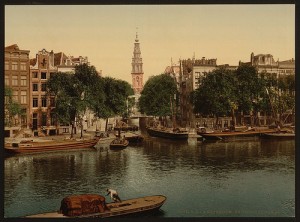Amsterdam Canal District Named UNESCO World Heritage Site!

The Amsterdam canal district has been added to the prestigious United Nations Educational, Scientific and Cultural Organization (UNESCO) Heritage List! The decision was announced at the 34th Session of the World Heritage Committee in Brazil, making the canal district the 9th World Heritage Site in The Netherlands. The canal district is regarded as an international icon of urban planning and architecture.
Amsterdam’s 17th century canal district is a remnant of the Dutch Golden Age, a time when the city led the world in art, trade and architecture. The zone is composed of four curved canals that run parallel to each other and encircle the Amsterdam city center in a half moon – the Singel, the Herengracht, the Keizersgracht and the Prinsengracht.
According to UNESCO, who awarded the title of World Heritage Site to the 17th century canal ring area inside the Singelgracht, “the historical and urban ensemble of the Amsterdam canal district was a project for a new ‘port city’ built at the end of the 16th and beginning of the 17th centuries… This was a long-term process that involved extending the city by draining the swampland, using a system of canals in concentric arcs and filling in the intermediate spaces… This urban extension was the largest and most homogeneous of its time. As a model of large-scale town planning, it served as a reference throughout the world until the 19th century.”
Appropriately, the Rijksmuseum in Amsterdam currently has an exhibition on view until September 6, 2010 about the canal district featuring paintings, prints and drawings showing the spectacular development of 17th century Amsterdam entitled: “Amsterdam’s Canal Belt: The Expansion of Amsterdam in the Golden Age.” A number of maps from the Rijksmuseum’s own collection charting the expansion of the city will also be on display. Central to the exhibition are six views by Gerrit Berckheyde depicting the Gouden Bocht (Golden Bend) on the Herengracht Canal which was the richest part of the new city.
The Netherlands can now boast to a total of nine UNESCO-listed heritage sites, including an 18th century collection of windmills in Kinderdijk, about 1½ hours south of Amsterdam. For further details, visit Amsterdam’s World Heritage site and Holland’s Tourism site.



